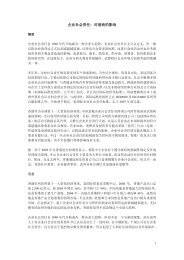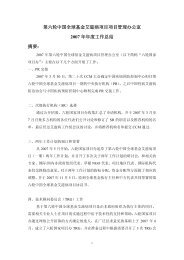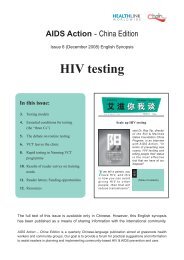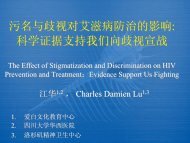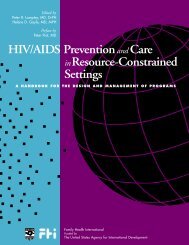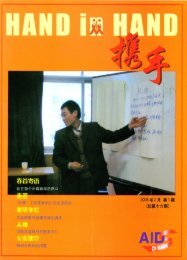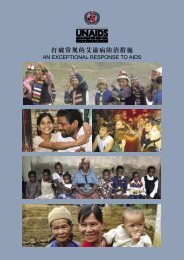The Training of Trainers Manual - UNFPA
The Training of Trainers Manual - UNFPA
The Training of Trainers Manual - UNFPA
You also want an ePaper? Increase the reach of your titles
YUMPU automatically turns print PDFs into web optimized ePapers that Google loves.
Youth-adult partnership<br />
A true partnership between youth and adults in a pr<strong>of</strong>essional setting has several distinguishing<br />
characteristics:<br />
■ It integrates the realistic perspectives and skills <strong>of</strong> youth with the experience and wisdom <strong>of</strong> adults.<br />
■ It <strong>of</strong>fers both parties the opportunity to make suggestions and decisions.<br />
■ It recognizes and values the contributions <strong>of</strong> both young people and adults.<br />
■ It allows young people and adults to work in full partnership – envisioning, developing,<br />
implementing, and evaluating programmes.<br />
Sharing the power to make decisions means that adults respect and have confidence in young people’s<br />
judgement. It means that adults recognize the assets <strong>of</strong> youth, understand what youth can bring to the<br />
partnership, and are willing to provide additional training and support when youth need it.<br />
Both youth and adults may need to embrace change in order for the partnership to work. For example,<br />
adults may need to modify their ideas about what will and will not work and about times and conditions<br />
under which work proceeds. Similarly, youth may need to understand the limitations and realities that<br />
affect a programme’s development, operation, and evaluation.<br />
In addressing adolescent and reproductive health issues, youth and adults can work together in a<br />
number <strong>of</strong> ways, such as conducting a needs assessment, writing a grant proposal, raising funds,<br />
designing a programme, training staff, delivering services, implementing interventions and projects,<br />
overseeing a programme, collecting data, evaluating a programme’s effectiveness, improving<br />
unsuccessful aspects <strong>of</strong> a programme, and replicating successful programmes.<br />
Safeguards should protect youth from abuse<br />
Minors need special protection when working with people who are older than they are. Institutions<br />
should have anti-harassment policies designed to prevent abuse as well as discrimination or<br />
harassment on any basis: racial, ethnic, religious, sexual, socio-economic, or age. <strong>The</strong> policies<br />
should outline how they are to be enforced, including a clear and safe grievance procedure.<br />
In countries where it is legal and possible, the backgrounds <strong>of</strong> all adults and older youth should be<br />
checked before they are hired. This process should also be clearly stated by organizations in its<br />
recruitment guidelines and followed for all staff.<br />
164 <strong>Training</strong> <strong>of</strong> <strong>Trainers</strong> <strong>Manual</strong>




